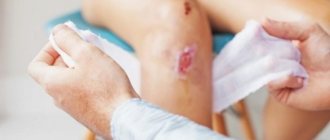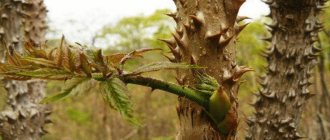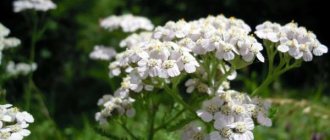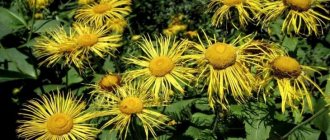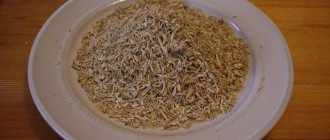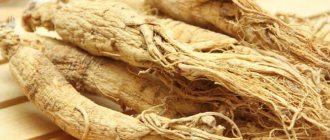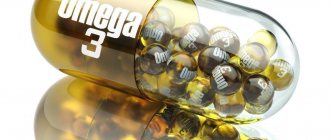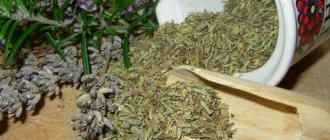By the end of September and beginning of October, sea buckthorn, one of the most valuable gifts of autumn, ripens. Sea buckthorn, beneficial properties and contraindications for the use of its fruits and leaves have long been known to fans of traditional medicine. This orange sour berry has long gained a well-deserved reputation as a healer and healer of many diseases. Today, many medicines, oils, tinctures, ointments, and cosmetics are produced based on sea buckthorn. Bark, leaves, shoots, seeds, berries - everything goes into use, all parts of this tree can be useful if you know how to handle them.
Sea buckthorn, photo:
The botanical name of this tree (or dioecious shrub) is buckthorn. Depending on where it grows, it can strengthen and grow to the size of a real tree or remain a low shrub. Unpretentious, frost-resistant, practically not afraid of pests, grows anywhere, on any soil. Under comfortable conditions, it can quietly grow and bear fruit for up to 100 years.
Its sour, astringent fruits are unlikely to be to your taste if you eat them just like that. But jams, marmalades, juices, jelly, confectionery or baked goods with this berry are pleasant and useful for adults and children. Alcoholic drinks, tinctures, decoctions, and teas are made on its basis. Let's take a closer look at the features of sea buckthorn, areas of application, as well as possible limitations.
Sea buckthorn jam, photo:
Sea buckthorn: plant features
The botanical name of the tree (dioecious shrub) is buckthorn. Depending on the current location of growth, the bush can get stronger and turn into a full-fledged tree. A distinctive feature is the plant’s unpretentiousness and resistance to sudden temperature changes and frost. The sea buckthorn bush is not afraid of pests and other unwanted microorganisms and can grow anywhere, regardless of the current soil type. Under comfortable conditions, the life expectancy of the shrub is about 100 years. During this period, it actively bears fruit and brings tangible benefits to the human body.
Sea buckthorn varieties: which one is better to choose?
- Chuyskaya - grows up to 3 meters in height, develops a wide crown. The fruits are very fragrant, bright orange in color. The variety is frost-resistant and unpretentious to harsh growing conditions.
- Elizabeth - miniature bushes with a dense crown. The branches are practically devoid of thorns and are covered with large, oblong leaves. The weight of the berries is approximately 1 g, elongated, with dense, juicy, sweet pulp.
- Altai is a large, lush bush, reaching up to 4 m in height. It is distinguished by the silvery color of young shoots. It has large fruits with sweet, juicy pulp.
- Augustine - the variety is distinguished by a black trunk, on which yellow spots are visible. Produces large, sour berries with a bright orange color.
- Buckthorn is a prickly variety that is a tree up to 5 m in height. Produces abundant harvests of brightly colored berries ranging in color from yellow to red. It has a delicate taste and extraordinary aroma.
- Alei is a variety that does not produce fruit, but serves to pollinate female plants. It grows very quickly and forms a dense crown. The branches are without thorns. It blooms for a very long time.
- Gnome is a medium-tall bush, distinguished by a long root system and large dark green leaves. Designed for pollination of female plants.
- Favorite is a very sweet variety, the berries of which are rich in carotene. Resistant to frost and drought, not susceptible to pests and diseases.
In addition, there are also varieties such as: jam, openwork, essel, Chuyskaya, amber, and giant sea buckthorn.
[Video] Planting, care, benefits + super device for harvesting:
Chemical composition of sea buckthorn berries
Sea buckthorn is considered a unique product in terms of its basic chemical properties. The berry contains a unique set of beneficial vitamins, macro and microelements and other biologically active substances. Orange pigments and carotenes are present in large quantities, giving the berry such a bright shade.
Among the useful components it is worth highlighting the following:
Vitamins:
- Vitamin A
- beta carotene
- Vitamin B1 (thiamine)
- Vitamin B2 (riboflavin)
- Vitamin B4 (choline)
- Vitamin B5 (pantothenic)
- Vitamin B6 (pyridoxine)
- Vitamin B9 (folate)
- Vitamin C (ascorbic acid)
- Vitamin E (alpha tocopherol)
- Vitamin H (biotin)
- Vitamin K
- Vitamin PP
- Niacin
Macronutrients:
- Potassium, K
- Calcium, Ca
- Silicon, Si
- Magnesium, Mg
- Sodium, Na
- Sera, S
- Phosphorus, P
- Chlorine, Cl
Microelements:
- Aluminium, Al
- Bor, B
- Vanadium, V
- Iron, Fe
- Yod, I
- Cobalt, Co
- Lithium, Li
- Manganese, Mn
- Copper, Cu
- Molybdenum, Mo
- Nickel, Ni
- Rubidium, Rb
- Selenium, Se
- Strontium, Sr
- Fluorine, F
- Chromium, Cr
- Zinc, Zn
- Zirconium, Zr
Digestible carbohydrates:
- Mono- and disaccharides (sugars)
- Glucose (dextrose)
- Sucrose
- Fructose
Polyunsaturated fatty acids:
- Omega-3 fatty acids
- Omega-6 fatty acids
What makes sea buckthorn unique?
Bright, sweet and sour berries of sea buckthorn are not only a valuable food product. Its use in cooking, cosmetology, and medicine led to industrial breeding and enhanced selection. More than 70 cultivated species of sea buckthorn have been registered in Russia alone.
In Siberia, by the beginning of the 21st century, about 5 thousand hectares were allocated for planting medicinal plants. Sea buckthorn grows and bears fruit well in warm regions from Moldova to the Caucasus ranges.
Botanical description of sea buckthorn
This unpretentious, frost-resistant shrub has many popular names: waxberry, Siberian pineapple, ivotern, sea thorn, sand berry, wolfberry. In each region where wild species grow, the plant received its own name.
The Russian word “sea buckthorn” is associated with the peculiarity of abundant fruiting, because the berries grow densely and densely close to the shoots. The crop is named “Siberian pineapple” for the specific taste of the still green berries.
The botanical name of sea buckthorn - Hippophae rhamnoides - is translated from Latin as “brilliant horse”, which is associated with the beneficial effect of the plant on the appearance and health of wounded, sick horses, to which it was added to food.
Sea buckthorn, the medicinal properties of which are widely known and used by official medicine and in traditional treatment, is a bush, or less commonly a tree, from 3 to 6 meters in height. Without shaping and pruning, the plant after 10 years of intensive growth can exceed 15 m. The average lifespan of a sea buckthorn bush is 20 years.
Sea buckthorn is a dioecious plant. For full fruiting, the presence of both male and female plants is required. It is possible to determine the identity of the tree only after 3 years, when flower buds appear. In female plants they look like hearts, and in male plants they look like retracted cones.
The small, inconspicuous flowers, which appear at the end of April, are wind pollinated, so the yield does not depend on the presence of insects.
Young shoots of tree-like bushes are silvery and pubescent. Over time, the bark hardens and becomes brown, almost black. The branches are often strewn with long thorns, making berry picking, pruning and care difficult. Selection of new species is aimed, in particular, at developing new thornless varieties.
What parts of sea buckthorn are used for medicinal purposes?
Ripe berries are used as food and medicine. The round, oblong drupes are shiny, juicy, and most often orange. The color of the berries can vary from golden yellow to red, depending on the variety. The stone is oblong, dark, almost black. Full ripeness of the fruit occurs no earlier than the end of August.
Sea buckthorn leaves are also used for preparing home remedies - linear, simple, oblong, pointed on both sides, with a greenish-gray upper and silvery lower surface. Silver bark is also harvested from young branches until it becomes lignified and remains elastic.
Collection of sea buckthorn
Sea buckthorn berries are harvested in the fall, starting in September. Brightly colored raw materials that have retained their elasticity and do not deform when harvested are considered ripe. The fruits do not fall off on their own and can remain on the bushes all winter.
The tight fit of the berries to the branches between the thorns and twigs makes manual picking difficult. Usually sea buckthorn is “snatched” from the branches using a special comb or a ring of fishing line. After frost, the berries can simply be shaken off the plants.
How to prepare sea buckthorn
Jam, compotes, and juice are prepared from delicious berries for the winter. But for medicinal use, the collected berries should either be dried or frozen. This is the only way to preserve the properties necessary for treatment for a long time.
Features of sea buckthorn harvesting:
- Drying. Outdoors, under a canopy or in the oven at + 50 °C. The fruits turn red and can be easily ground.
- Freezing. The washed fruits are scattered into containers and placed in the freezer.
- The leaves are collected during sea buckthorn flowering and air dried. The bark is cut off in early spring, before the fruit buds bloom, and dried in air.
Sea buckthorn can fully exhibit its medicinal properties only if properly stored. Raw materials that have lost their characteristic color, smell, or have been stored longer than required are considered to be of poor quality.
Storing sea buckthorn
Sea buckthorn berries do not tolerate transportation well, so they must be collected carefully. It is advisable not to overfill or wash the fruits before use.
Shelf life of sea buckthorn berries:
- at room temperature – 4 days;
- in the refrigerator – 1 week;
- dried fruits – 24 months;
- frozen sea buckthorn – 6 months.
With any storage method, berries, leaves, and bark should be protected from sunlight and dampness. The lower the temperature, the longer the raw material will retain its properties.
Chemical composition of sea buckthorn
The golden berry exhibits its main medicinal properties due to the vitamins and microelements included in its composition. Some of them decompose during heat treatment and are lost during drying. Therefore, the chemical composition of fresh and processed raw materials may differ significantly.
Vitamin composition of sea buckthorn berries in % of the body’s daily needs per 100 g of fresh product:
| Vitamin C | 220 % | The main natural antioxidant, protects and regenerates cells, protects other vitamins from destruction |
| Vitamin B1 | 1,8 % | Necessary for the functioning of the cardiovascular, nervous system, gastrointestinal tract |
| Vitamin B2 | 2,5 % | Participates in hematopoiesis, production of hormones and antibodies. Responsible for healthy looking hair, nails, skin |
| Choline (B4) | 4,2 % | Reduces the level of “bad” cholesterol, protects cell membranes and vessel walls, and enhances lipid metabolism. Mild nootropic, antidepressant |
| Folic acid (B9) | 2,3 % | Necessary for the immune, reproductive, circulatory systems |
| Vitamin P (mainly rutin) | 2,5 % | Reduces permeability and increases the elasticity of capillaries, reduces blood clotting |
| Vitamin E | 33,3 % | Immunomodulator, antioxidant, enzyme activity regulator, essential for vision and nervous system |
| Beta carotene | 235 % | In the form of vitamin A, it destroys free radicals, nourishes the cornea, supports the immune system, and participates in the functioning of all body systems |
Sea buckthorn has a high concentration of polyunsaturated acids, which sets it apart from other berries. 100 g of fresh fruit contains 175% of the required daily amount of Omega acids for the human body.
Sea buckthorn also exhibits medicinal properties due to the content of macro- and microelements, the most noticeable of which is chromium. 100 g of sea buckthorn accounts for more than 900% of the daily requirement of this element.
Chromium promotes insulin efficiency, which maintains normal blood sugar levels and prevents the development of diabetes mellitus in resistant conditions. The element is involved in the breakdown of “heavy” fats, which reduces the level of “bad” cholesterol.
Sea buckthorn also contains per 100 g:
- boron – 164% (of the daily requirement);
- vanadium – 62%;
- manganese – 46%;
- rubidium – 44%;
- iron – 27%.
- as well as copper, molybdenum, silicon, nickel.
Unique compounds - phytosterols - are found in concentrations much higher than the minimum required level (per 100 g - more than 1000%). During pregnancy and lactation, these substances are especially necessary for the normal development of the fetus and maintaining the health of the woman.
Sea buckthorn bark contains significant concentrations of serotonin, the hormone of pleasure, which allows it to be used to regulate the psycho-emotional state. Despite the richness of the composition, the calorie content of sea buckthorn fruits does not exceed 82 kcal per 100 g of edible part. This makes berries not only a delicious dessert and useful medicine, but also a unique dietary product.
Nutritional value and calorie content of the product
The high nutritional value puts sea buckthorn on a par with well-known medicinal plants.
It included:
- proteins (1.2 g per 100 g of product)
- fat (5.4 g)
- carbohydrates (5.7 g)
- dietary fiber (2 g)
- water (83 ml)
The calorie content of sea buckthorn is only 82 kilocalories per 100 grams of product. This is a very small amount of the daily norm for the human body.
We recommend buying:
BESTSELLER
More than 500 units sold
Sea buckthorn oil Altai premium 25% 100 ml.
Sea buckthorn oil Altai premium Sea buckthorn oil “Altai” is a concentrated product obtained from the fruits of plants grown in Altai. Thanks to gentle processing, they preserve… read more
rating and reviews
BESTSELLER
More than 500 units sold
Sea buckthorn berry dried PET 50 gr. Russian roots
Sea buckthorn fruits are bright orange glossy berries, because of their bitter taste, they are practically not consumed fresh. But infusions and decoctions from them are not only useful, but also pleasant... read more
rating and reviews
Simple recipes for beauty and health
Among the medicinal forms of sea buckthorn, the most popular are:
- oil,
- infusion of berries and leaves,
- decoction of bark and leaves,
- juices from fruits and leaves.
But experience shows that the most valuable and sought-after sea buckthorn component is oil. We will talk about it in more detail later.
Sea buckthorn oil
As we noted earlier, sea buckthorn oil is beneficial for the human body and its health. It can be purchased at the store, or you can prepare it yourself. Today there are several ways to prepare sea buckthorn oil.
- First method
- The juice is squeezed out of the fruit and placed in an enamel, plastic or glass container.
- Next, the container with the juice is placed in a dark place for about 24 hours.
- During this period, the juice does not just stand - it separates into several parts, which are considered important components.
- The oil rises to the very top; it is light in color compared to other layers.
Collect it with a teaspoon, very carefully, and then place it in dark glass vials.
| ADVICE You should not use metal utensils for these purposes, as they can provoke oxidation processes, and this will not have the best effect on the properties and medicinal qualities of the juice. |
- Second method
- The berries are carefully sorted; damaged, dried sea buckthorn fruits are recommended to be removed.
- Next, the berries are washed and placed on a baking sheet to dry a little in the oven.
- After they have cooled, they are ground to a flour consistency.
- The oil (olive or refined) is heated to 60 °C, no more, after which crushed fruits are poured into it.
- All this is thoroughly mixed and infused for 21 days.
After this, the oil is filtered and it is ready for consumption or local use.
Infusions and decoctions of sea buckthorn
But sea buckthorn is a very versatile plant, and almost every part of the bush is enriched with a variety of useful substances. For example, you can prepare an infusion of leaves and branches.
- To do this, the leaves are collected, dried, after which they are used to make tea or drinks, infusions.
In general, decoctions have many purposes - cold and antiseptic, anti-cancer, antidepressant, etc. Infusions and decoctions perfectly cleanse the body of toxins that have accumulated in various systems of human life.
- For example, 1 tbsp. dry leaves or broken twigs can be poured into 1 cup of boiled hot water.
- In a water bath, this infusion is brought to a boil and then infused for half an hour.
Afterwards, you should strain the liquid and consume it orally, about 0.5 cups at a time. Two weeks are enough for a person to begin to experience relief in his condition.
Sea buckthorn tincture with alcohol
- 100 g of dried leaves are poured into 1 liter of alcohol.
- The tincture is prepared and simmered for two weeks; periodically it can be shaken and sent back to its cool, dark state.
- After two weeks of infusion, the solution is filtered and 20 drops of liquid are used, dissolving in water.
In principle, a person will also notice that his condition is improving, his sleep is normalizing, and the emotional and nervous tension that literally haunts modern man is decreasing.
Of course, these are not all folk recipes - there are more than a hundred of them, and everyone may have their own preferences in folk medicine. But we have listed those recipes that have already been tested by time and many people. They really noted the positive effects of sea buckthorn on their condition, so we can trust this plant and the advice of more experienced gardeners and doctors.
Photo: oil, juices, decoctions and tinctures are prepared from sea buckthorn
Beneficial properties of berries for the human body
Sea buckthorn is a storehouse of useful vitamins and minerals. Its use not only helps to improve overall well-being.
Main beneficial properties:
Relieves inflammation.
The plant provides tangible benefits to the body in the fight against various types of inflammation related to diseases of internal organs, as well as external manifestations (skin diseases, mechanical damage, deep and non-healing wounds).
Eliminates pain and spasms.
Brewed sea buckthorn berries can effectively combat severe pain, spasms and pain that arise as a result of improper functioning of the liver, stomach and other organs of the digestive tract.
Heals wounds.
Fruit oil allows you to speed up the process of tissue and cell regeneration. It is possible to apply the oil to eliminate acne marks, smooth out scars and small cuts. Sea buckthorn evens out skin color and helps get rid of unevenness that often appears during the healing process of the skin layers.
Has a gentle laxative effect.
The plant actively helps improve digestion and helps fight severe constipation. You can brew tea from berries to get rid of this problem as quickly as possible and without serious drug intervention.
Effectively destroys pathogenic microbes and bacteria.
Plants have an antimicrobial effect and help eliminate the spread of pathogens. It is reasonable to use sea buckthorn both for open inflammatory processes and internally. The use of fruits and leaves contributes to the overall improvement of the body.
Strengthens the immune system.
The fruits and juice of sea buckthorn help restore the body during colds and flu. A brewed solution or tea helps fight initial ailments - cough, chills, sore throat, but regular use of this plant can completely restore the body after a long illness.
Accelerates skin regeneration.
Achieved through a combination of unique acids in the berry. The oil is effective when used externally. With its help, you can improve the overall condition of the skin and protect it from negative actions.
Protects skin and mucous membranes.
Protects against external dangers: the effects of sudden temperature changes and frost. Sea buckthorn oil includes a complex of vitamins that nourish the skin from the inside, eliminating small cracks and major damage. The benefits of the plant for the body are quite extensive. It will be felt by those with dry skin, for whom it is important to provide constant hydration and nutrition without the use of aggressive additives and chemicals.
What is vitamin A
Vitamins are regulators of biological processes, without which the biochemistry of the body and the functioning of organs are disrupted. Most of them come from food, and some are synthesized by the body or intestinal flora. Vitamins are divided into water-soluble and fat-soluble. The former do not stay in the body for a long time and are excreted with metabolic products, while the latter accumulate in the liver. We wrote about vitamin D - the only one that affects the body's immune defense. But C turned out to be not as useful as dietary supplement manufacturers write about it.
Vitamin A is fat soluble. A person receives it from food in the form of precursors - retinoids and carotenoids. They are contained in the fatty depot of the liver, and when needed they are converted into retinol and sent to the tissues. Vitamin A regulates embryogenesis, the functioning of reproductive organs, skin glands, inflammation, the creation of new cells and their death. A retinol derivative is one of the components of rhodopsin. This is an eye pigment responsible for color perception.
External retinoids are used in dermatology: they treat acne and are prescribed to prevent age-related skin changes. It has been proven that isotretionine prevents the enzymatic degradation of collagen, the main structural component of the skin. Vitamin A derivatives are added to sunscreens for antioxidant protection.
“Vitamin A is used externally for many dermatoses, especially those associated with impaired keratinization, sebum secretion and healing,” says Nina Sergeeva, a dermatologist at the Fantasy children’s clinic. “It accelerates the restoration of skin integrity, reduces sebum production and regulates keratinization.”
Systemic retinoids are treatments for severe acne, psoriasis, rosacea, precancerous lesions, and nonmelanoma skin cancer. They normalize the formation of cells in the upper layer of the epidermis, reduce sebum secretion and inflammation, providing long-term remission. They are prescribed in cases where external therapy is ineffective or gives temporary results.
Contraindications for use
Experts include the following as the main contraindications for consuming sea buckthorn:
- Individual intolerance,
- Tendency to allergic reactions;
- Difficulty breathing and nasopharyngeal diseases;
- Diseases of the liver, gall bladder and pancreas (cholecystitis, hepatitis, pancreatitis);
- Urolithiasis disease;
- Acute diarrhea (in this case, the use of sea buckthorn should be limited temporarily until the condition stabilizes);
- Low blood pressure;
- Increased acidity of the stomach (in this case, you cannot drink freshly squeezed sea buckthorn juice and eat fresh berries, but you can use a decoction of the fruit);
- Peptic ulcer disease. (only juice and berries are also prohibited, the acids in their composition can provoke an exacerbation; sea buckthorn oil, on the contrary, is recommended for consumption);
- The appearance of puffiness of the eyes or spots when using juice or oil externally;
- The appearance of strong bitterness immediately after drinking decoction, tea or sea buckthorn oil;
- The appearance of itching or uncharacteristic rashes.
Contraindications and harm
Despite all the beneficial properties of the plant, sea buckthorn can also be harmful to health. This should be taken into account when regularly eating fruits. The main contraindications to eating berries are:
- Chronic diarrhea and tendency to diarrhea. The fruit has a laxative effect. For the same reason, berries are not eaten for several days after poisoning until digestion normalizes.
- Allergy to sea buckthorn - this phenomenon does not occur often, but it does occur. In such a situation, the plant should not be used either for oral or external use.
- Gallbladder problems. The fruits will cause a serious exacerbation of the pathology and deterioration of the condition.
- Urolithiasis disease.
- Hypotension. If you have persistently low blood pressure, consuming sea buckthorn in large doses is dangerous, since the berries contribute to an even greater drop in the indicator.
- Severe pathologies of the pancreas.
In case of reduced immunity, sea buckthorn is consumed in small portions so as not to provoke the development of allergies.
How much sea buckthorn can you eat per day? Children are allowed to eat 10-15 grams at a time. berries, adults up to 50 gr. In order not to harm yourself, but to receive only the benefits from the fruits, it is recommended that a child eat no more than 30 grams per day, and an adult up to 150 grams. product.
Sea buckthorn oil is drunk up to 5 tbsp. l. per day.
The use of sea buckthorn in the treatment of various ailments
Sea buckthorn is eaten for many health purposes. It strengthens the immune system and helps with a whole range of diseases. Fresh or dried fruits are used to prepare a decoction, and the leaves are brewed into tea. But sea buckthorn oil preserves the beneficial properties of the plant best of all; it can be used both internally and externally.
Traditionally, sea buckthorn is used to treat a wide range of diseases:
Sea buckthorn decoction for cough.
Used for internal use. Relieves inflammation of the nasopharynx, helps thin the cough, accelerates the healing process due to the high content of vitamin C in the composition. It is recommended to consume it hot during periods of exacerbation of colds at least 2 times a day. Dried berries and sea buckthorn leaves are used to prepare the decoction. It is recommended to use one or two tablespoons of the plant per 250 ml of water. The leaves are poured with boiling water for 15-20 minutes, then the finished solution is filtered and cooled. The oil and juice can be used for chest rubs and compresses.
We recommend buying:
BESTSELLER
More than 500 units sold
Sea buckthorn berry dried PET 50 gr. Russian roots
Sea buckthorn fruits are bright orange glossy berries, because of their bitter taste, they are practically not consumed fresh. But infusions and decoctions from them are not only useful, but also pleasant... read more
rating and reviews
For diseases of the gums and oral cavity.
Crushed leaves (3 tsp) must be poured with boiling water and strained. The finished solution is infused for 15 minutes. After cooling, rinse your mouth with the infusion or take no more than 150 ml orally. Sea buckthorn tea therapy is considered the optimal solution for diseases of the gums and oral cavity of any nature.
For infectious diseases.
Sea buckthorn berries (1 kg) and sugar (no more than 200 g) are poured with vodka (1 liter), then covered with a tight lid. The drink is infused for a month in a cool place, then filtered. In case of exacerbation of the disease, it is allowed to take 30 ml per day in portions. The tincture allows you to increase the body's resistance to various types of infections.
For gastritis.
Treatment of stomach diseases is carried out in a course over a long period of time. Sea buckthorn oil is used for these purposes. It should be taken 1 teaspoon twice a day, 30 minutes before meals and before bed, but not earlier than 3 hours after the last meal. In the presence of active erosions, take the Oil 1 teaspoon per day, in the morning on an empty stomach. You can also take sea buckthorn berry oil in capsules.
We recommend buying:
BESTSELLER
More than 500 units sold
Premium class sea buckthorn oil 100 ml.
_________________________________________________________________________ Indications for use Sea buckthorn oil: The healing properties of sea buckthorn were valued in the ancient world. Sa... read more
rating and reviews
BESTSELLER
More than 500 units sold
Sea buckthorn oil extract, 100 capsules, 0.2 g each. ROS
Indications for use Sea buckthorn oil in capsules is a universal natural preparation that has proven itself as an external skin care product, in... read more
rating and reviews
For stomatitis.
Inflammation of the oral cavity can be eliminated using lotions from sea buckthorn solution or by treating with pure juice. Beneficial properties help eliminate the spread of microbes, and additional regenerating actions will speed up the healing process of small ulcers in the mouth. Sea buckthorn also reduces pain in the mouth. It is recommended to moisten a cotton pad with sea buckthorn juice and apply it to the inflamed area for at least 15-20 minutes. You can lubricate the affected tissues with oil several times a day, this will reduce pain and healing will be faster.
For diabetes mellitus.
A decoction of the leaves is indicated for type 1 and type 2 diabetes; it will improve immunity and reduce blood glucose levels.
For type 1 diabetes, not only berries are useful, but also leaves, from which decoctions, medicinal mixtures and infusions are prepared. They help lower blood glucose levels and boost immunity. To do this, take 15 g of dried crushed leaves and 100 ml of boiling water. The drink is infused for 1-2 hours, filtered immediately before drinking. It is recommended to take 10-15 ml 2 times a day.
For type 2 diabetes, it is advisable to include sea buckthorn products in the menu only after consultation with an endocrinologist, so that symptoms of deteriorating health do not appear.
We recommend buying:
BESTSELLER
More than 500 units sold
Sea buckthorn berry dried PET 50 gr. Russian roots
Sea buckthorn fruits are bright orange glossy berries, because of their bitter taste, they are practically not consumed fresh. But infusions and decoctions from them are not only useful, but also pleasant... read more
rating and reviews
For cervical erosion.
Treatment of cervical erosion with sea buckthorn oil is very convenient for women, since the procedure does not require special hospital conditions and can be carried out in the comfort of home. During treatment, make tampons (from a sterile bandage with cotton wool) by generously moistening the tampon with sea buckthorn oil. The procedure is carried out daily at night for 7-14 days.
We recommend buying:
BESTSELLER
More than 500 units sold
Sea buckthorn oil Altai premium 25% 100 ml.
Sea buckthorn oil Altai premium Sea buckthorn oil “Altai” is a concentrated product obtained from the fruits of plants grown in Altai. Thanks to gentle processing, they preserve… read more
rating and reviews
For colitis.
Sea buckthorn oil for colitis should be used as an addition to the main treatment prescribed by the doctor. Directions for use: take a teaspoon of sea buckthorn oil in the morning and evening without washing it down or stirring it in a glass of warm milk. The course of treatment is best carried out during the period of exacerbation of the disease, which most often occurs in the fall or spring.
We recommend buying:
BESTSELLER
More than 500 units sold
Premium class sea buckthorn oil 100 ml.
_________________________________________________________________________ Indications for use Sea buckthorn oil: The healing properties of sea buckthorn were valued in the ancient world. Sa... read more
rating and reviews
For hemorrhoids.
The astringents and tannins of sea buckthorn dry and accelerate wound healing, and also create a layer on the surface of the skin and mucous membranes that protects tissues from harmful influences and microbes. After using sea buckthorn lotions, the following therapeutic effects can be observed: anti-inflammatory, immunostimulating, healing, softening, antimicrobial, hemostatic and venotonic. It is used like this: for at least 10 days, gauze folded in several layers is soaked in sea buckthorn oil, after which they make lotions or simply lubricate the inflamed areas with it and fix it to the skin with a plaster. This compress is applied before bed and left overnight. Lasting results can be seen after 3-4 procedures.
We recommend buying:
BESTSELLER
More than 500 units sold
Sea buckthorn oil Extra 150 ml. (Ekovit+)
Sea buckthorn oil is a natural source of vitamins for your health Sea buckthorn is a valuable plant that has been known for many years for its beneficial properties. Based on sea buckthorn... read more
rating and reviews
For burns.
Sea buckthorn extract should not be used immediately after an injury. It blocks the skin's ability to cool, resulting in even more pain. If the burn is not severe and there are no open wounds on the skin, then immediately after the injury you should rinse the affected area under running cold water. You need to keep it for at least 15 minutes to cool the skin. Only after this, a medicinal product is used that helps prevent infection and reduce pain. Sea buckthorn oil can be used for 1st and 2nd degree burns. The remedy must be used in its pure form. It is applied to open areas of the skin using a cotton pad and a compress is made.
For hypertension.
The use of sea buckthorn for hypertension reduces the amount of cholesterol in the body and prevents the development of serious complications: hypertensive crises, strokes, heart attacks. Sea buckthorn lowers blood pressure slowly, so long-term use is necessary. The method of application can be varied; sea buckthorn can be used in any convenient way. Most often, crushed berries are mixed with sugar in a 1:1 ratio and taken a teaspoon 3 times a day with water. This mixture can be stored in the refrigerator for up to 2 months.
We recommend buying:
BESTSELLER
More than 500 units sold
Sea buckthorn berry dried PET 50 gr. Russian roots
Sea buckthorn fruits are bright orange glossy berries, because of their bitter taste, they are practically not consumed fresh. But infusions and decoctions from them are not only useful, but also pleasant... read more
rating and reviews
For chronic pancreatitis.
Sea buckthorn for pancreatitis inhibits pathogenic microorganisms, stimulates the production of digestive secretions, has an enveloping effect, and helps normalize intestinal microflora. Treatment with oil or decoction of berries is allowed, only eating fresh fruits is prohibited - the acids they contain can provoke a new attack. Pour half a teaspoon of chopped dried or fresh berries into 300 ml. boiling water and leave for 5 minutes under the lid, add sugar or honey to taste.
For colpitis.
Tampons with sea buckthorn, sage and tea tree oils, taken in equal proportions and thoroughly mixed, will relieve discomfort and itching. Insert the turunda into the vagina and leave it there overnight. The procedure must be done daily. The course of therapy is 14 days. Relief usually occurs within two days.
We recommend buying:
BESTSELLER
More than 500 units sold
Sea buckthorn oil Altai premium 25% 100 ml.
Sea buckthorn oil Altai premium Sea buckthorn oil “Altai” is a concentrated product obtained from the fruits of plants grown in Altai. Thanks to gentle processing, they preserve… read more
rating and reviews
BESTSELLER
More than 500 units sold
Sage essential oil 5 ml. Kingdom of Fragrances
__________________________________________________________________________ Indications for use Sage (essential oil): Sage was used as a medicinal plant... read more
rating and reviews
BESTSELLER
More than 500 units sold
Tea tree (essential oil), 5 ml. Kingdom of Fragrances
__________________________________________________________________________ Indications for use Tea tree (essential oil): Tea tree essential oil is extracted from the leaves... read more
rating and reviews
During pregnancy.
Pregnant women are allowed to put sea buckthorn berry juice in their nose when they have a runny nose. Tea with sea buckthorn or a fruit drink made from its berries will help reduce fever and support the immune system. If a woman has a sick stomach or a peptic ulcer of the stomach or duodenum, she is recommended to drink sea buckthorn oil before meals. Sea buckthorn suppositories are widely used in the treatment of hemorrhoids at any stage of pregnancy. Tampons soaked in sea buckthorn oil are useful against thrush. Consuming sea buckthorn orally, in moderate quantities, is recommended during pregnancy. It helps replenish vitamin deficiencies. Also, the berries or juice of this plant will be a good support for an organism weakened as a result of illness or injury.
When breastfeeding.
Just like pregnant women, it is recommended to consume berries and oil composition. They will improve the condition of the mother’s body, and also help the baby develop properly and grow healthy. They will increase resistance to stress, compensate for the lack of microelements, vitamin A, E, B and others, and improve metabolic processes. If a nursing woman has no intolerance or other contraindications, then the plant will only bring benefits. But it is recommended to start with minimal doses in order to monitor the child’s reaction.
Before taking sea buckthorn, you need to consult a specialist!
Sea buckthorn for the winter
The fruits are collected with care; the plant has thorns. It is more convenient to shake off the berries. A cloth is spread under a tree or bush, on which the harvest will fall. Now you need to take care of your preparations for the winter.
Jam
In sea buckthorn jam for the winter, prepared according to this recipe, the berries will remain safe and sound.
Ingredients:
- 2 kg. sea buckthorn;
- 2 kg. Sahara;
- 300 ml. water.
Preparation:
- Wash the fruits in a colander under running water.
- Mix sugar with water.
- Bring to a boil over low heat.
- Cook, stirring for 10 minutes.
- Pour syrup over berries.
- Leave for 3 hours.
- Strain through a colander.
- Bring the syrup to a boil again.
- Pour over the fruits.
- Cook over low heat for 15 minutes.
- Pour into sterile jars.
- Close with metal or nylon lids.
Store in a cellar or refrigerator.
Sea buckthorn juice
Prepared sea buckthorn juice for the winter will become a source of vitamins for the body during the cold season. The drink is prepared in various ways. Add sugar, honey, vegetable and fruit juices to taste. Here is one of the most popular recipes:
- Pass the fruits through a juicer.
- Boil syrup (1 liter of water, 1 kg of sugar).
- Mix hot syrup with juice (proportion 1:2).
- Pour the drink into sterilized liter jars.
- Place in a water bath.
- Sterilize for 20 minutes. at 85 degrees.
- Roll up the lids.
- Turn upside down.
- Cover with a blanket.
- Leave for 2 days.
- Store in a dark, cool place.
Sea buckthorn oil
This product is an excellent medicinal and cosmetic product. Sold in stores and pharmacies. But why buy if a bush with orange berries grows in the yard and preparing sea buckthorn oil is not at all difficult:
- Squeeze the juice from the berries.
- 3 tbsp. Pour seedless cake into a glass jar.
- Pour 500 ml. unrefined vegetable oil.
- Leave for 8 days.
- Strain.
- Ready.
To improve the properties of the product, you can once again pour the resulting oil into a new cake and leave it for a week.
Compote
Sea buckthorn compote is an aromatic drink with a pleasant sweet and sour taste, reminiscent of pineapple. Preparation requires a minimum of time . The recipe is for a 3-liter jar.
Ingredients:
- sea buckthorn fruits - 1 kg;
- water - 1 l.;
- sugar - 200 gr.
Preparation:
- Clean the berries from debris.
- Rinse.
- Sterilize jars and lids.
- Distribute the berries among the jars by 1/3 of the volume.
- Add water and sugar to the pan.
- Boil.
- Fill the jars with boiling syrup.
- Sterilize for 15 minutes.
- Remove from stove.
- Roll up the lids.
- Cover with a warm cloth.
How to freeze sea buckthorn
Freezing is the easiest way to preserve berries for a long time without losing quality.
For this:
- Rinse the fruits.
- Dry on a waffle towel.
- Place on a tray in a single layer.
- Place in the freezer.
- Turn on the deep freeze function.
- After 3 hours, take it out.
- Place in freezer bags.
- Place in the freezer.
You can also freeze sea buckthorn for the winter in plastic containers designed for sub-zero temperatures. In this state, the berry can be stored for 6 months without losing its beneficial properties.
Sea buckthorn is a necessary product in every home!
Sea buckthorn is a truly universal natural remedy that will help, if not completely cure, then alleviate a huge number of diseases. It can also be taken for prophylactic purposes.
A serious plus is that you don’t have to have fresh or frozen berries at home to do this. The properties of the plant are preserved in oil. Just 1-2 teaspoons almost completely satisfy the body's daily need for vitamins.
Dried berries or the oil composition of such a plant are something that should be in every home. They are useful not only for illnesses, but also as a supplement to the daily diet of adults and children. They will improve the body's resistance to infectious diseases and strengthen it, and compensate for vitamin deficiencies in the diet. Oil can also be enriched in cosmetic preparations - creams, masks. This will enhance their properties of softening and regenerating the skin and nourishing the hair.
Today, there are many brands of this product on the shelves of pharmacies, but not all of them have a real therapeutic effect. The quality, and therefore the medicinal effectiveness of sea buckthorn oil, directly depends on trusted suppliers. Take care of your health - order sea buckthorn only from trusted stores.
How to distinguish male from female sea buckthorn?
Sea buckthorn plants are divided into male and female. During flowering, the former are covered with staminate flowers, and the latter with pistillate flowers.
Before flowers appear, plants can be distinguished by their buds. The female plant is covered with small buds, which have 2-3 scales. Male buds are large, covered with a large number of scales.
Female plants grow quickly and have large leaves. Pollination occurs with the help of wind, which transfers pollen from male plants to female plants.
[Video] How to distinguish a female plant from a male one:
Medicinal properties of sea buckthorn
Medicine has extensive experience in using sea buckthorn for the treatment of various diseases, their prevention, and recovery from illness. Frequent reasons for taking the berry are vitamin deficiency, low hemoglobin, anemia, general weakness, and pain.
Medicinal properties of sea buckthorn:
- Activation of metabolic processes, normalization of metabolism.
- Anti-sclerotic, antioxidant.
- Analgesic, bactericidal.
Sea buckthorn - beneficial and medicinal properties - Liver support.
- Inhibition of tumor processes.
- Regeneration of mucous membranes, skin, wound healing.
As a result of complex treatment, mood stabilizes, sleep improves, and hormonal levels normalize.
For women
In addition to its general strengthening, tonic and vitamin effects, sea buckthorn has a special effect on the female body. Phytosterols, vitamins, fatty acids are balanced in such a way that they enhance and restore reproductive function, resist the aging of cells and glands, and even out a woman’s hormonal levels.
The great value of sea buckthorn is that its properties are applicable during pregnancy and the postpartum period. The berries are indicated internally and externally to prevent stretch marks and skin deformations.
Breastfeeding is also not a contraindication to taking sea buckthorn products. On the contrary, berries can enhance lactation and help the female body recover faster. Sea buckthorn oil does not cause allergic reactions in babies and perfectly regenerates tissue, therefore it is used to treat cracked nipples.
In gynecological practice, the healing properties of sea buckthorn oil help treat colpitis, cervicitis, and are used for cervical erosions.
For men
Sea buckthorn is considered a “female” medicine. This is due to the high content of phytosterols, which, when used regularly, reduce the effectiveness of male hormones and suppress their production. Regular consumption of fruits reduces the level of active testosterone.
Despite this, the berries are successfully used for prostatitis, to quickly relieve inflammation and reduce tissue swelling. Berries promote better urine flow and reduce stagnation. The concentration of tocopherols allows the use of sea buckthorn to restore reproductive function in men, but only in short courses.
For children
Berries, oil, compotes and sea buckthorn juice can be used for children from the first years of life. The product is added to the child’s diet gradually, monitoring the individual reaction to the new food. Allergy to sea buckthorn is extremely rare, however, at the first sign of difficulty breathing, rash or itching on the skin, the product is canceled.
Indications for introducing sea buckthorn into a child’s diet:
- influenza, ARVI, any respiratory diseases;
- recovery period after illness;
- prevention of infections in the autumn;
- danger of spring vitamin deficiency;
- poor diet in adolescents.
Do not use more than a few berries per day for children under 6 years of age without first consulting a pediatrician.

